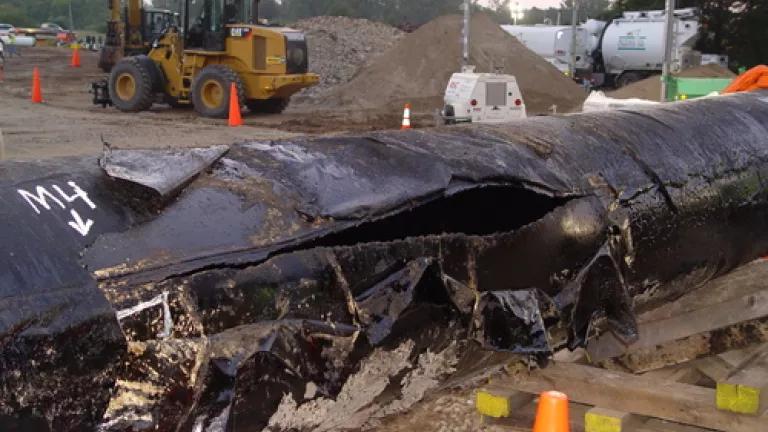
More evidence has emerged that tar sands pipelines may not be as safe as industry claims. Back in 2010, TransCanada, the company behind the controversial proposed Keystone XL tar sands pipeline, opened a smaller tar sands pipeline to move tar sands crude oil from Alberta, Canada to Illinois and Oklahoma. That pipeline, now known as "Keystone 1," moves about 500,000 barrels of tar sands into the U.S. every day when operating. But its short operating history has been plagued by problems. In its first year, the pipeline spilled 12 times. Then, in October 2012, two years after opening, the pipeline was suddenly shut down for immediate repairs due to undisclosed safety issues.
Nearly three years later, documents obtained by DeSmog Blog through the U.S. Freedom of Information Act (FOIA) reveal just how serious those safety issues were. In short, a contractor inspecting a segment of the pipeline in Missouri discovered an area where 95% of the pipeline's wall had corroded--about 1/3 the thickness of a dime. This initial discovery led to the finding of three more areas of corrosion ranging from 78-83% of the pipeline's wall. So, what's happening to Keystone 1? And, more importantly, what could this mean for other tar sands pipelines, including the proposed Keystone XL tar sands pipeline?
The 2010 Enbridge pipeline rupture in Marshall, Michigan.
Unfortunately, the answers to these questions have not been provided to the public, nor has any information about whether a spill may have occurred in relation to these discoveries. DeSmog explains that the Pipeline and Hazardous Materials Safety Administration (PHMSA) withheld any documents related to an ongoing compliance review by the agency.
But high rates of external corrosion on tar sands and other heavy oil pipelines have been an issue of heated public debate for several years. In 2011, NRDC published a report highlighting the potential safety issues that arise from transporting tar sands crude in the form of diluted bitumen through pipelines. One point raised in the report is particularly striking given the information revealed by DeSmog's FOIA request. This has to do with the operating temperatures of tar sands pipelines. According to permits and field observations, tar sands pipelines operate above 130°F, often reaching temperatures as high as 150°F.
Another pipeline network with a much longer history of moving heavy oil drives the importance of this fact home. In California, the network of pipes that move oil from Bakersfield's Kern River field to California refineries has been plagued by a history of numerous spills and other safety issues. A ten-year study of that network confirmed that pipeline operating temperatures are the key to the problem. In sum, it was found that, regardless of pipeline age, coating, or material, pipelines operating in the 130-160°F range leaked due to external corrosion at a rate 24 times greater than pipelines operating at lower temperatures.
For months, the arguments against the proposed Keystone XL tar sands pipeline have centered on its serious climate impacts. The release of these new documents once again brings the issue of pipeline safety to fore, providing another critical piece of evidence that Keystone XL and all pipelines identified by Big Oil as conduits for tar sands pose serious threats to the communities and waterways they pass through on their journey through the American heartland. It is time we acknowledge that locking in this dangerous, heavily-polluting infrastructure is not in the national interest, and that saying no to the proposed Keystone XL tar sands pipeline is a necessary step toward moving the U.S., and the world, toward an alternative energy future.

